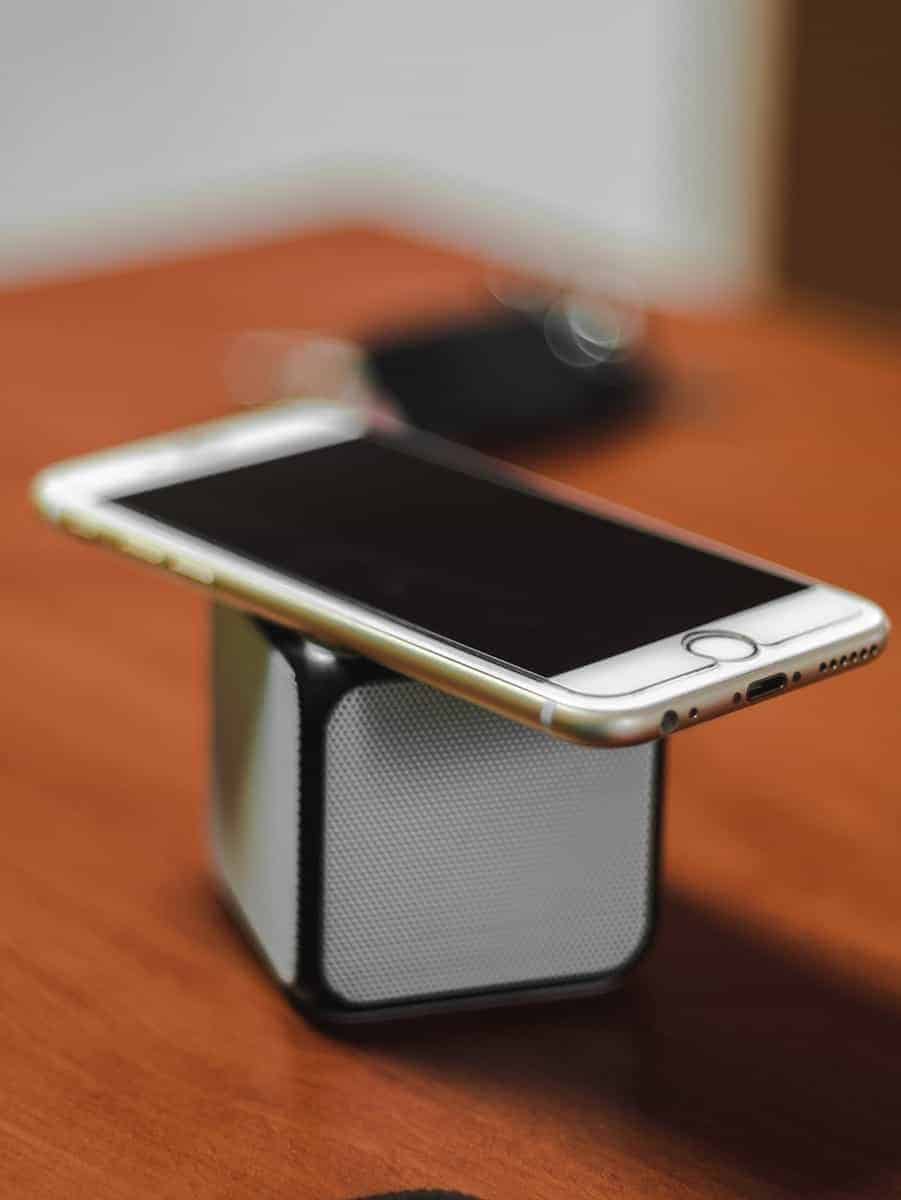In September 2016, Apple made a significant change that had a major impact on the mobile and sound/audio industry by removing the headphone jack from their iPhone lineup. This move caused a lot of controversy because not everyone had fully adopted Bluetooth technology at the time, and many earbuds, headsets, and phone accessories became obsolete.
However, despite the backlash, the iPhone 7 was released without the traditional 3.5mm headphone jack, marking a pivotal moment in smartphone design. This decision signaled a shift towards wireless audio solutions and laid the groundwork for innovations like the development of AirPods, which Apple introduced alongside the iPhone 7.
When/Why Apple Got Rid Of Headphone Jacks
Apple’s decision to remove the headphone jack, starting with the iPhone 7 in 2016, was a controversial move that sparked a lot of debate. While the company officially stated it was about “courage” to innovate, the real reasons were likely a combination of factors.
When
Apple removed the headphone jack, starting with the iPhone 7 in 2016.
- Space Optimization: Removing the headphone jack freed up valuable internal space within the increasingly thin iPhone designs. This allowed for larger batteries, improved haptics, and other components.
- Pushing Wireless Technology: Apple was heavily invested in its AirPods wireless earbuds, and removing the headphone jack encouraged users to adopt this new technology. This aligned with their vision of a wireless future.
- Water Resistance: The headphone jack was a potential entry point for water, making it harder to achieve better water resistance. Removing it simplified the sealing process and contributed to improved water resistance ratings in iPhones.
- Lightning Connector Control: By relying on the Lightning connector for audio, Apple maintained control over the accessory ecosystem and potentially earned more from licensing fees.
While the move was initially met with resistance, it ultimately pushed the industry towards wireless audio. Today, wireless headphones and earbuds are the norm, and the headphone jack is becoming increasingly rare on smartphones.
However, it’s worth noting that some users still prefer the wired experience for its reliability, audio quality, and lack of charging needs. The removal of the headphone jack remains a contentious topic, with arguments on both sides.
Reasons Why
- Space Savings: Removing the jack freed up internal space for larger batteries, Taptic Engine, and other components.
- Water Resistance: Eliminating the jack helped improve water and dust resistance in iPhones.
- Wireless Push: Apple aimed to drive adoption of wireless audio solutions like AirPods.
- Design Considerations: Potential to create slimmer phone designs.

Important Notes
- Controversy: The decision was highly controversial at the time.
- Industry Trend: Many other smartphone manufacturers followed Apple’s lead in ditching the headphone jack.
In the years that followed, the removal of the headphone jack has influenced other manufacturers and the tech industry at large, reflecting a broader move toward a wireless future. Some consumers had concerns regarding compatibility with existing wired headphones and the need for adapters. However, over time, the industry adapted, and the market for Bluetooth headphones expanded, making wireless audio more accessible to users.
Key Takeaways
- Apple removed the headphone jack starting with the iPhone 7 in September 2016.
- The decision influenced smartphone design and the development of wireless audio technology.
- Industry and consumers adapted to the change, leading to a growing market for Bluetooth headphones.
Evolution of the iPhone
This section explores how Apple’s iPhone design has evolved and the impact of removing the headphone jack—a significant shift in mobile device functionality.
The iPhone 7 Era
The iPhone 7, introduced in 2016, marked a notable change in Apple’s smartphone design. It was the first model to eliminate the 3.5mm headphone jack, a standard feature on most phones. Apple’s decision shifted users towards using the Lightning port for both charging and audio output.
The Rise of Wireless
Apple’s elimination of the headphone jack coincided with the promotion of wireless audio solutions. The release of AirPods and advancements in Bluetooth technology showed a clear movement in the market towards wireless headphones. This change reflected a broader trend within the tech world, with other companies like Samsung also embracing wireless technology in their devices.
Technological Shifts
Removing the headphone jack spurred innovation. It allowed for new features and internal space optimization, leading to more robust device performance in subsequent models like the iPhone X and SE. Apple, and the smartphone industry as a whole, saw a push for true wireless experiences and an expansion of the accessory market with products like dongles and adapters, affirming the move away from wired headphones.
Consumer Impact and Industry Response
The removal of the headphone jack by Apple had a significant impact on consumers and moved the entire smartphone industry towards a new standard of audio connectivity.
Market and User Adaptation
- Headphones and Earbuds: As Apple bid farewell to the headphone jack, consumers turned their attention to wireless options. Apple’s own AirPods and Beats earbuds gained popularity, promising convenience without the tangle of wires.
- Convenience: The shift led users to explore the benefits of wireless technology, valuing the freedom and ease it provided during activities such as exercising or commuting.
- Adapters: For those still holding onto wired headphones, Apple and other manufacturers offered adapters. This helped ease the transition by allowing consumers to use existing headphones with new models of mobile devices.
- Consumer Sentiment: Responses were mixed. Some consumers embraced the move towards a wireless future, while others were frustrated by what they saw as a forced change creating a need to purchase new accessories.
Competitors and the Ecosystem
- Samsung, Google, and other Android phone makers: Initially, some competitors like Samsung and OnePlus highlighted the headphone jack in their devices as an advantage. Over time, however, many followed Apple’s lead, also removing the jack from their flagship Android phones.
- Wireless Ecosystem: The industry-wide move away from wired headphones created a surge in demand for Bluetooth-enabled audio devices. This shift stimulated growth in the market for wireless earbuds and headphones across various brands.
- Smartphones: As the market adapted, the removal of the jack became less of an issue for consumers. New smartphone features and improved wireless technology helped make the transition smoother for users, solidifying the shift as a new norm in mobile device design.
Frequently Asked Questions
The shift away from the 3.5 mm headphone jack by Apple marked a significant change in smartphone design. This section aims to address common questions regarding this decision and its impact on users and the industry.
What was the last iPhone model to feature a headphone jack?
The iPhone 6s and iPhone 6s Plus were the last iPhone models to include a 3.5 mm headphone jack. Following these models, Apple decided to remove the jack starting with the iPhone 7 and iPhone 7 Plus.
Why was the headphone jack removed from iPhones?
Apple removed the headphone jack from the iPhone to make room for new features and improvements such as a larger battery, better cameras, and water and dust resistance. The removal also encouraged the use of wireless audio solutions.
Which year did iPhones no longer include the 3.5 mm headphone jack?
Starting in 2016 with the release of the iPhone 7, Apple’s new iPhone models no longer came with the 3.5 mm headphone jack.
Will Apple ever reintroduce the headphone jack in future iPhone models?
Given Apple’s trajectory and the advancement in wireless technology, it is unlikely that Apple will reimplement the 3.5 mm headphone jack in future iPhone models.
How did consumers react to the removal of the headphone jack on iPhones?
Reaction to the removal of the headphone jack was mixed. Many users were initially upset by the change, but overtime, as wireless headphone technology improved and became more widely adopted, the criticism lessened.
What alternatives has Apple provided since the removal of the headphone jack?
Apple has provided users with alternatives such as the Lightning port for wired audio and the introduction of its own AirPods for a wireless audio experience. Additionally, Apple included a Lightning to 3.5 mm headphone jack adapter with the iPhone models immediately following the headphone jack’s removal.







